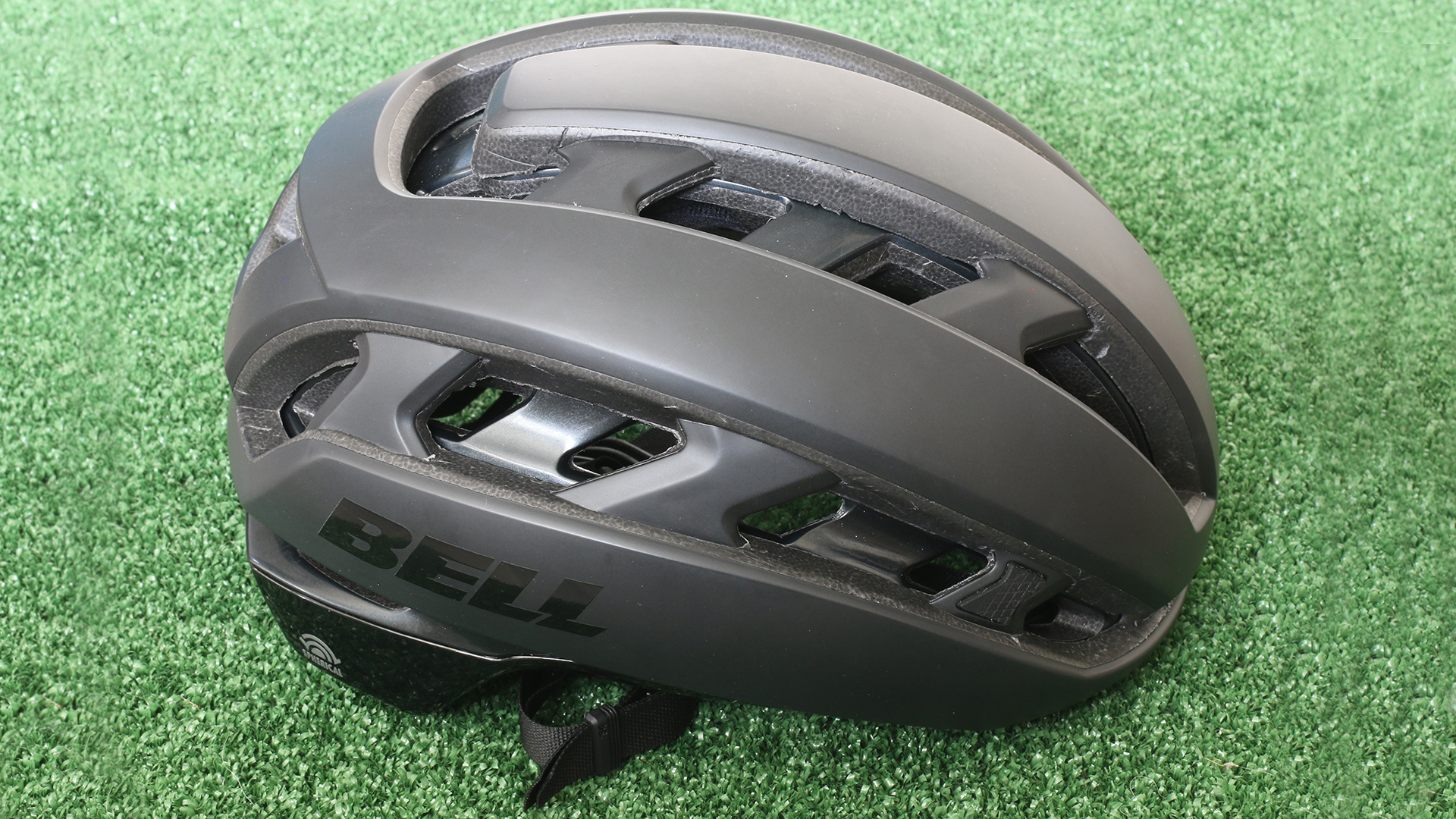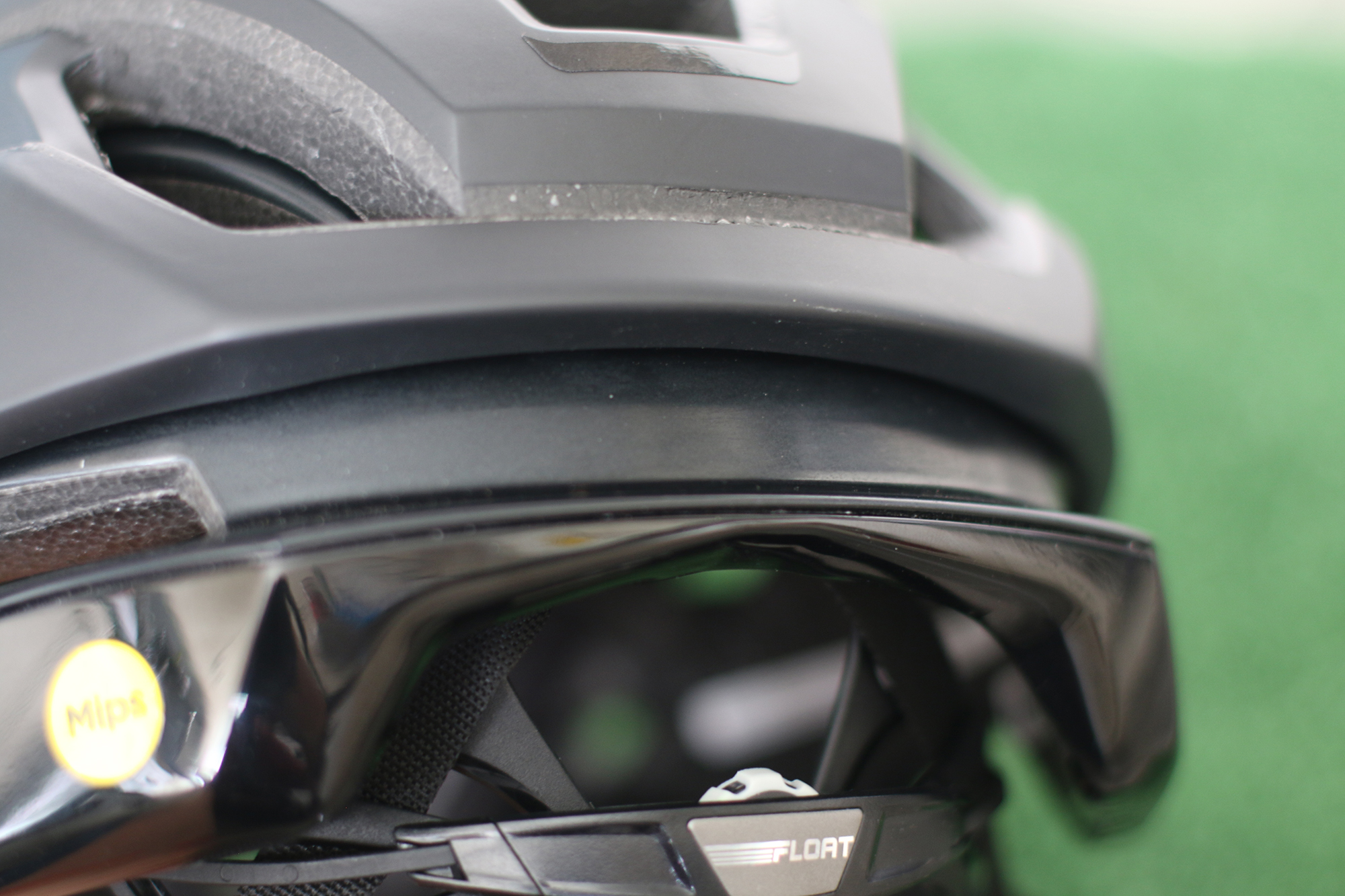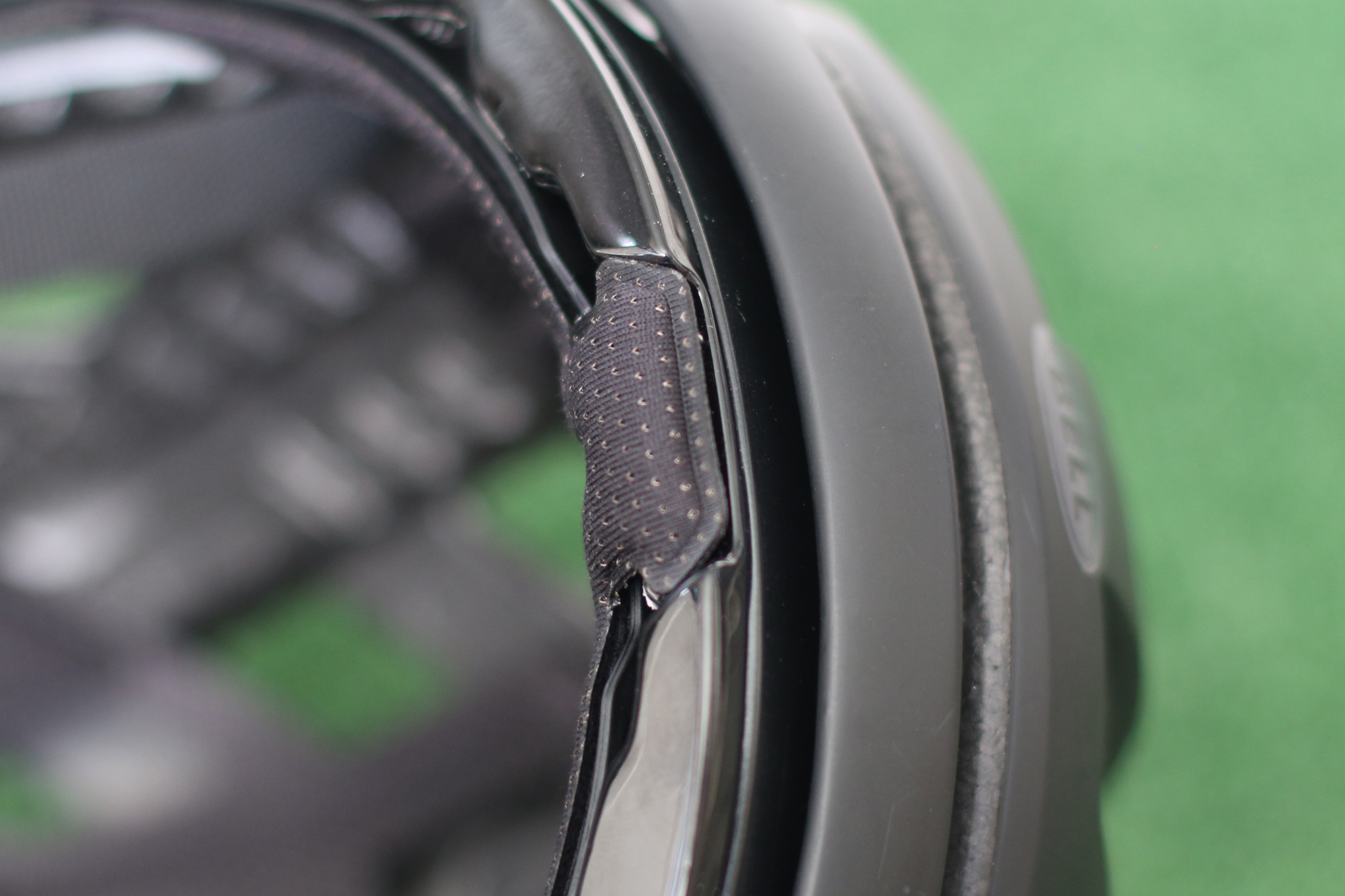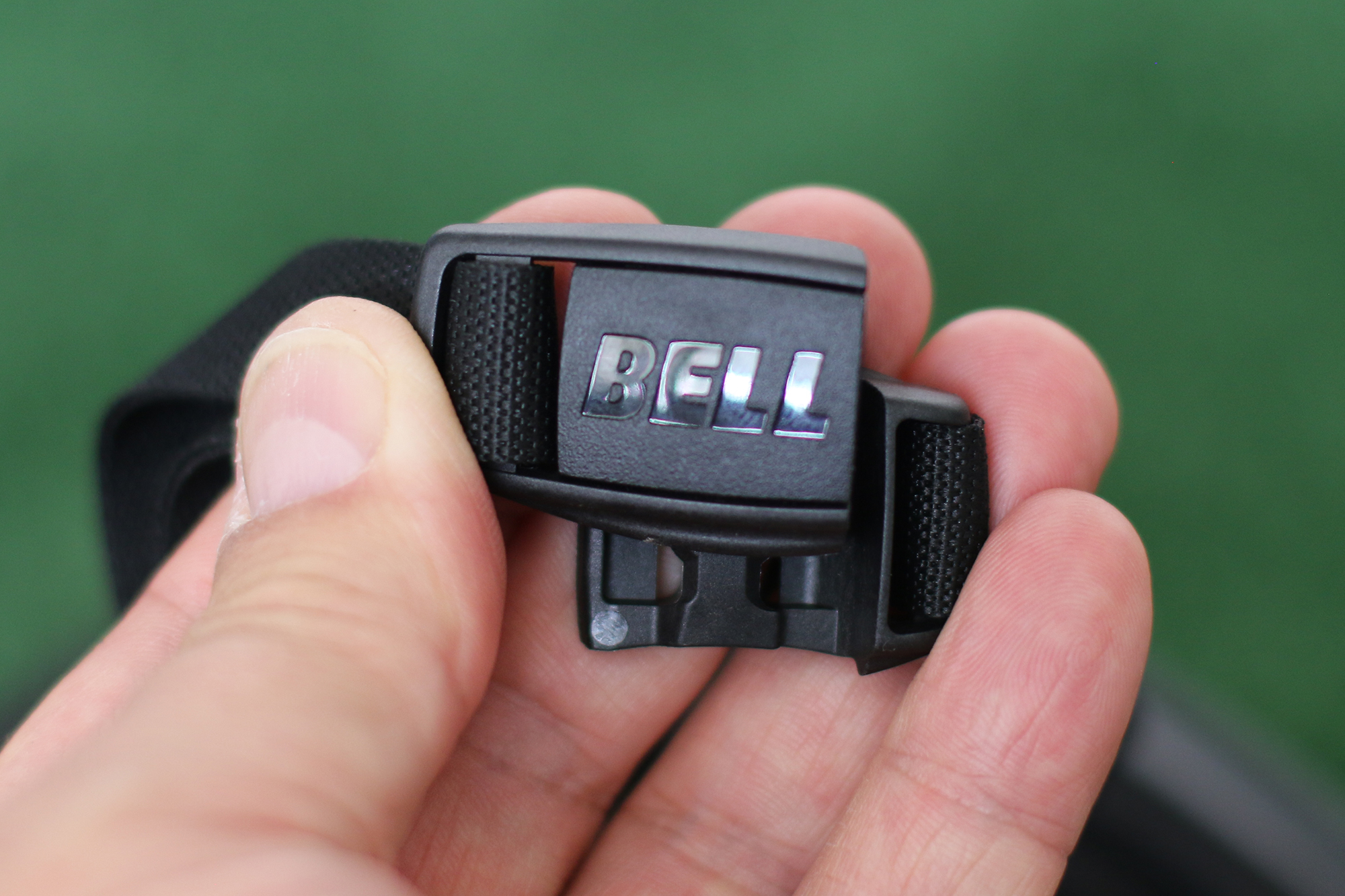Bell XR Spherical MIPS helmet review – comfortable do-everything helmet that promises durability
Bell brings Spherical MIPS tech to a helmet that’s aimed at gravel and serious recreational riders who want a lid to last more than one season

An excellent helmet for everything except possibly road racing, with great looks and ventilation, and a range of features that make it very easy to live with.
-
+
Very comfortable
-
+
Very well ventilated
-
+
MIPS feature may improve protection
-
+
Lots of clever, useful features
-
-
Expensive
-
-
On the heavy side
You can trust Cycling Weekly.

Bell has played a blinder with the XR Spherical, a helmet that combines great looks and practicality with the marque’s most advanced head protection technology. Combine that with an easily-adjusted cradle, one-handed magnetic buckle and a host of other user-friendly tweaks and you might just have the best helmet on the market for all-rounders who mix up road, gravel and trail riding.
Bell XR Spherical MIPS helmet: construction
Superficially, this is yet another helmet with an expanded polystyrene body and a thin co-moulded outer shell to ward off everyday bumps and scrapes. But there’s an awful lot more going on under that shell.
The main body is constructed in two pieces, an outer made of the aforementioned expanded polystyrene and an inner of expanded polypropylene. They can move independently; you can literally wiggle the inner shell around inside the outer. That’s the ‘Spherical powered by MIPS’ feature, the idea being that the outer shell can move to absorb a glancing impact.

This feature suggests a better level of protection than many helmets, though it’s noticeable how cautious Bell is about claiming that. Only three MIPS Spherical helmets have been tested by Virginia Tech’s STAR evaluation system, though they all scored five stars.
The inner shell extends a couple of centimetres more down the back of your head than a usual road helmet, for a bit more protection if you come off backwards. That’s a clue that the XR isn’t just for tarmac, but for various styles of dirt riding too.
Proper gnarly types will probably want something burlier like Bell’s Super Air Spherical, but if your riding mix encompasses asphalt, dirt roads, and trails, the XR is the one helmet to rule them all.

The XR Spherical has lots of clever design touches that help it achieve this. Fourteen large vents in the outer shell let plenty of air through, which is vital whether you’re speeding through the woods or grinding up a climb, and there are vents between the inner shell and cradle to pull more air over your head.
The latest race content, interviews, features, reviews and expert buying guides, direct to your inbox!
The dial to snug down the Float Fit occipital cradle is coated with rubber to make it easy to grip, and at the front the padding extends under the brim to wick sweat away from your forehead.

Bell’s UK site talks about “weight reduction like never before” which is a bit silly. Our size L helmet weighs 317g; an M is claimed to be 285g. Those are good numbers for a helmet with off-road-style rear coverage, but there are lighter MIPS helmets, including the Aether and Helios from Bell’s sister brand Giro.
To help give drivers an extra chance of spotting you, there’s a reflective decal on the back, and the feature set is rounded out by slots in the shell to stash your glasses in.
Bell XR Spherical MIPS helmet: the ride
The XR spherical needed very little adjustment to comfortably sit on my head and the Fidlock magnetic buckle is an absolute doddle to use one-handed, facilitating taking the XR off if you want to keep cool on a long, hot climb.

Tweaking the fit with the dial on the rear cradle is trivially easy, and you can adjust its position so that it securely grabs the back of your head. It almost feels like you don’t need to do up the chinstrap because it’s so stable.
Those big vents and internal channels route plenty of air over your head. The XR Spherical is comfortable on warm days, and I needed a hat to keep my head warm on cool days. The Float band and occipital cradle provides easy adjustment for the extra bulk of even a winter hat.
The Ionic+ padding is very comfortable against your skin, wicks away sweat really well and can be removed for washing.

The XR Spherical should be durable too. Bell has taken care not to leave any exposed polystyrene or polypropylene foam in those areas where helmets typically get damaged by day to day use, such as round the bottom edge. That’s covered by the co-moulded shells so it won’t get tatty just from minor drops.
Features like MIPS Spherical and the magnetic buckle all add to the weight, but despite the XR being slightly heavy for a high-end helmet, you don’t notice it when it’s on your head. If you’re fanatical about shaving every gram you’re probably going to look elsewhere, but for normal people, the features, comfort and usability are worth a bit of extra mass.
Bell XR Spherical MIPS helmet: value and conclusion
The Bell XR Spherical MIPS helmet has lots of well-thought-out details in a helmet that’s very comfortable and easy to live with. Nevertheless, the whole unit feels robust, and should prove more durable than your typical super-light high-end hemet.
That helps justify the price, which at $225 / £210 is undeniably steep for a helmet that’s not aimed at performance-obsessed racing whippets.
Overall, this is an excellent helmet that you can fairly reasonably expect to be still comfortable and effective long after you’ve forgotten how much it cost.
Bell XR Spherical MIPS helmet: specs
- Construction: Fusion in-mould polycarbonate shell, Progressive Layering, Overbrow ventilation
- Features: No-Twist Tri-Glides; Sweat Guide; Eyewear Storage; Spherical Technology; MIPS; Fidlock Buckle; Progressive layering; Ionic+ padding;
- Weight: 317g
- Colours: Black, Blue, Green, OG Camo, Pink, Grey — all have matte outer and contrasting, usually gloss inner shell
- Fit system: Float Fit
- Standards: US CPSC, CE EN 1078

One of the UK's most experienced cycling journalists, John started writing about bikes for Mountain Biking UK magazine back in the late 1980s. A spell in Sydney saw him editing Australian Mountain Bike magazine, before getting online as a news and production editor at Cyclingnews.com, in the 'the drugs are for my dog' era.
Since returning to the UK in 2006 he has worked on the launch of Bikeradar.com, and launched Totalwomenscycling.com before handing the editorship over to someone more representative of the readership. He has also written for Cycling Plus and Cyclist magazines, and most recently was editor-at-large for road.cc.
He lives in Cambridge with his partner and a silly number of dogs (or possibly a number of silly dogs), and divides his riding time between Tarmac and gravel while battling the notorious Fenland headwinds.